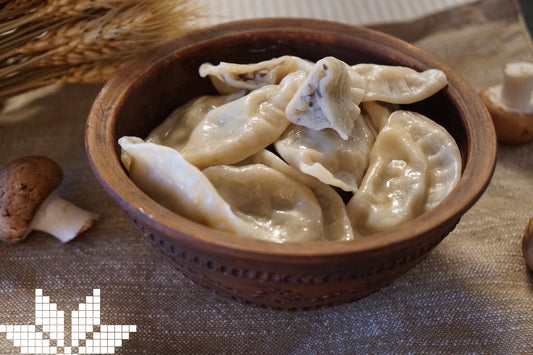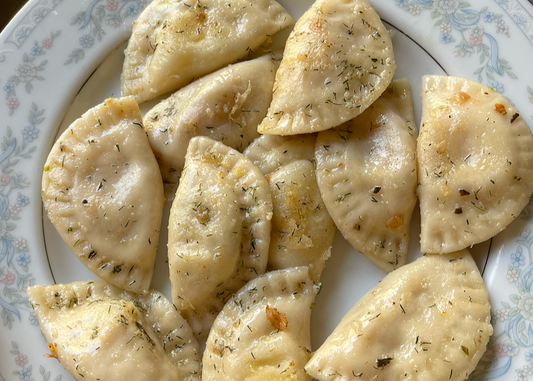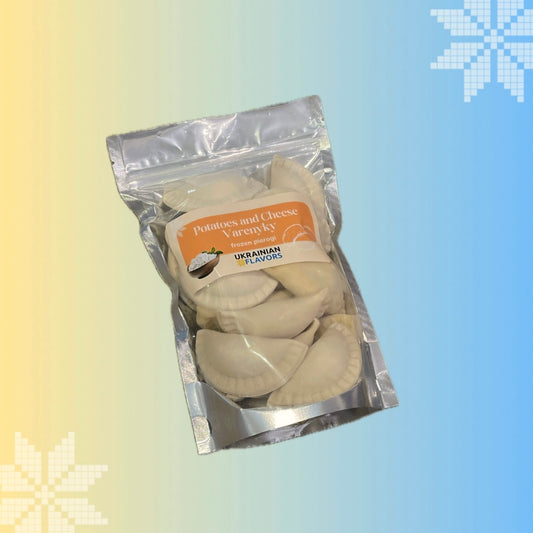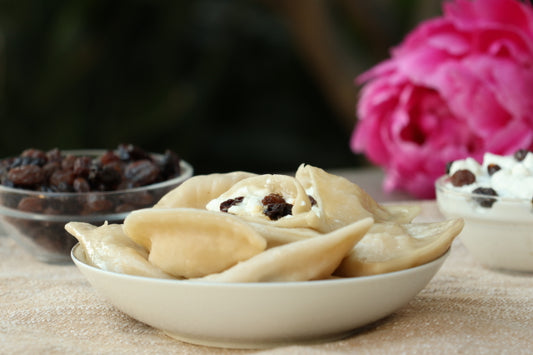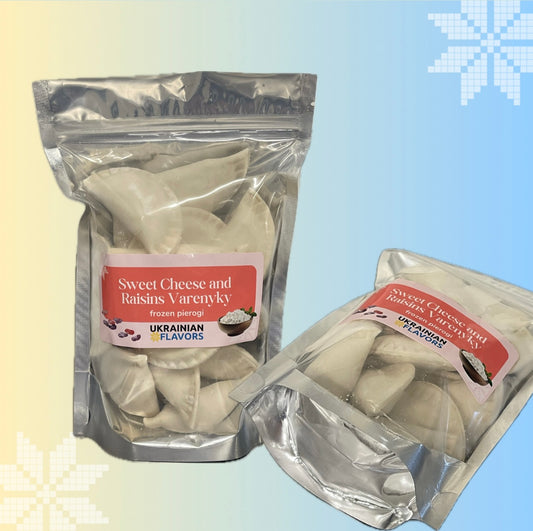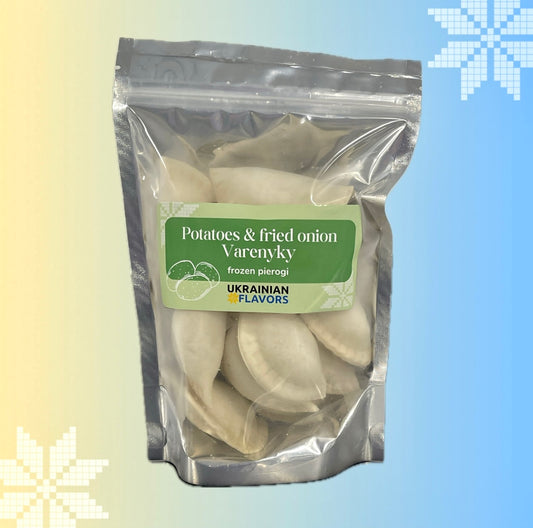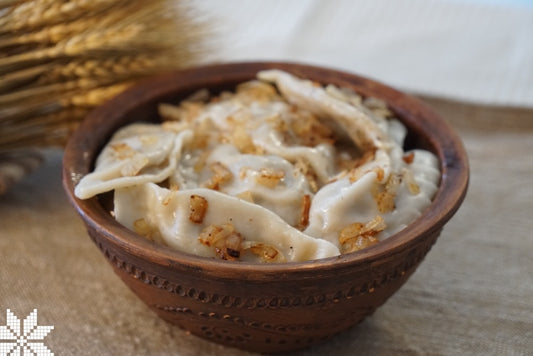At Ukrainian Flavors, Christmas is more than just a holiday — it is a time to honor traditions, share love, and gather around the table with family. Ukrainian Christmas is deeply connected to food. For us, Ukrainian Xmas food is not just about taste, but about memories and the feeling of being home.
Growing up, our family table always held twelve dishes for Christmas Eve. The number symbolized the twelve apostles, and while the specific dishes could change from year to year, two of them were always present: kutia and uzvar.
Kutia, made from wheat, poppy seeds, honey, and nuts, was the heart of the Christmas Eve meal. It was sweet, nourishing, and symbolic of unity and blessing. Uzvar, a drink made by simmering dried fruits, brought warmth and comfort to the table. These two dishes were never left out, no matter what.

Other favorites included fresh homemade bread, vegetarian holubtsi (stuffed cabbage rolls) — much like the ones now on our menu at Ukrainian Flavors — as well as varenyky with cabbage and varenyky with cherries, which always added both a savory and sweet note to the feast.

Every family had its own variations, but what united all Ukrainian homes was the care put into preparing each dish. Cooking together was part of the celebration. Children helped roll the dough for varenyky, while parents prepared the fillings or baked bread, filling the house with smells that even now remind us instantly of Christmas.
Family Gatherings and Traditions
In my family, Christmas was also a time to visit our grandparents. We would all come together at their home — aunts, uncles, cousins — everyone bringing their favorite homemade dishes to share. It was the one time of year when no one missed the gathering, and the house was filled with laughter, stories, and the comforting aroma of holiday food.
After the Christmas Eve dinner, children would go from house to house singing kolyadky — traditional carols that wished families health and prosperity.

Another important custom was to bring a bowl of kutia to our godparents on the way to visit relatives. This gesture was both a blessing and a wish for a fruitful year ahead, and of course, it came with more kolyadky and sweet treats in return.
On the holiday table, some families also placed a didukh — a sheaf of wheat that symbolized ancestors and the cycle of life. Although in my childhood we only had a Christmas tree, the tradition of the didukh has been slowly revived in recent years, bringing an even deeper connection to Ukrainian heritage.

Today, here in the United States, we carry these traditions with us. Through Ukrainian Flavors, we share them with our community — so that everyone can enjoy not just the taste of authentic Ukrainian cuisine, but also the story, warmth, and meaning behind it.
Christmas is about more than food, but food has a way of holding family memories. And for us, Ukrainian Christmas food — kutia, uzvar, holubtsi, and varenyky — is a way to bring those memories to life, year after year.


